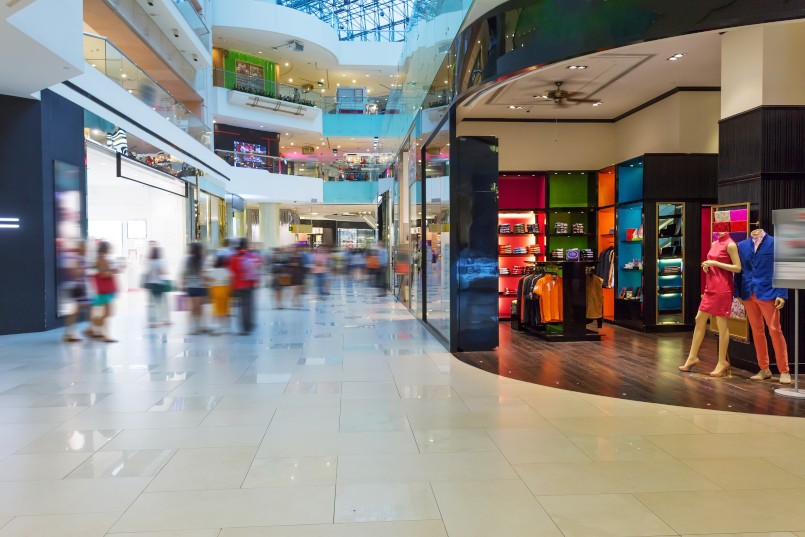What are the environmental challenges for retailers when we’re shopping again?
Raising this subject while COVID 19 continues its march across the globe might seem a bit strange. We will one day have a ‘new normal’ and in theory, people will go out and shop once more.
Marketers will need to ensure that their messaging within a retail setting is designed and calibrated to simulate the customers’ needs and wants to get the wheels of the economy moving once more.
The necessity of migration to online shopping has also seen more pressure with a move away from bricks and mortar retail. I reread a blog from 2013 titled “The Death of the Merchant’ and it looks like the pandemic has shorted their lifespan somewhat.
At the time of writing, opening and trading would seem the biggest challenges to any retailer but before this year began and hopefully in the not too distant future, we will be focusing once more at the pre-eminent threat, being the slow burn that is climate change.
Hidden carbon impacts within business
The linking of environmental responsibility with marketing activity has to date been ignored and generally put in the ‘too hard’ basket. The primary reason for this is it does not sit comfortably within a business’s normal operational boundary.
It is also not as easy to capture meaningful data from external activities, as the company does not have direct control over these, for instance, the carbon emissions being generated.
We do see environmental reporting on these indirect control or correctly called, scope 3 carbon emissions, in areas such as contracted vehicle fleets, air travel, and employee commuting but beyond this, there is very little understanding. While difficult, it cannot be ignored as these scope 3 or supply chain emissions are typically 4 times higher than day-to-day operational emissions. So for a business to claim a real reduction in their carbon emissions these scope 3 emissions cannot be ignored.
Research that helps marketer retailers adhere to company-wide environmental policy
TrinityP3 has continued to advocate for a pivot to a more sustainable approach to marketing and also supplying carbon emission measurement using our own developed and verified methodology, the CO2counter. To back up our methodology we constantly seek and support up-to-date research from highly recognised sources.
We asked the question about online advertising emissions two years ago. This research helped raise awareness of the hidden environmental cost of Facebook and other online advertising.
During these unprecedented times, we thought we would look for more hidden marketing emissions where the knowledge bank was pretty empty i.e. the carbon emissions generated by in-store advertising. Again, we were privileged to have a research project accepted and undertaken by the University of Sydney under their Post Graduate Masters of Sustainability Programme.
TrinityP3 in conjunction with The Gaia Partnership acted as the sponsor and workplace mentor for a student and we helped narrow the research criteria to focus on in-store advertising. Below is a full report (anonymised at the request of the participating retailer) from the student where he examined the carbon emissions from two retail outlets and then extrapolated these findings to pose some interesting questions.
Summary of Findings
While we recommend downloading and reading the full report here, for those who do not wish to read an academically written paper these are some of the findings we think are of interest to all retailers.
- While other factors are to be considered, in both selected stores the emissions from the digital advertising were higher than the printed advertising
- A large retail business with 500 outlets would be responsible for nearly the same amount of emissions as the Hazelwood power station in Victoria being 15,000 Kilotons p.a.
- The retailer was responsible for the equivalent emissions from 5000 family households annually from their POS advertising
- Only reporting on some scope 3 emissions (contracted vehicle fleets, air travel, and employee commuting) considerably underestimates the total emissions the company is responsible for along the supply chain
- POS spending is only a fraction of the overall advertising spends therefore total scope 3 emissions across the marketing area will be very high. There are many companies offering to help businesses address this shortfall in understanding these scope 3 emissions including our friends at Emitwise in the UK, but there has been almost no work done around marketing activities
- Complications with property ownership or franchise models can hide the emissions used to sell goods and services within a retail environment
- Retailers should use these findings as part of the store planning and refurbishing strategies to help understand the environmental impact of static printed communication and digital displays
- For environmental conscious retailers, the energy use and embedded carbon of digital display monitors should be a major consideration in any fit-out purchasing decision
Interestingly, there is little published academic research around measuring greenhouse gases in advertising so this is just one part of a much larger research project that we will continue to look at.
While the participating retailer has asked to remain anonymous we would like to thank them for their openness and assistance, especially in these extremely challenging times.
If any marketer or agency is interested in getting involved in the next stage of this research or wishes to have an environmental report for their retail network please contact me here.
Interested in finding out more on how to make your marketing supply chain more environmentally sustainable? Check out some of our environmental marketing solutions here.




